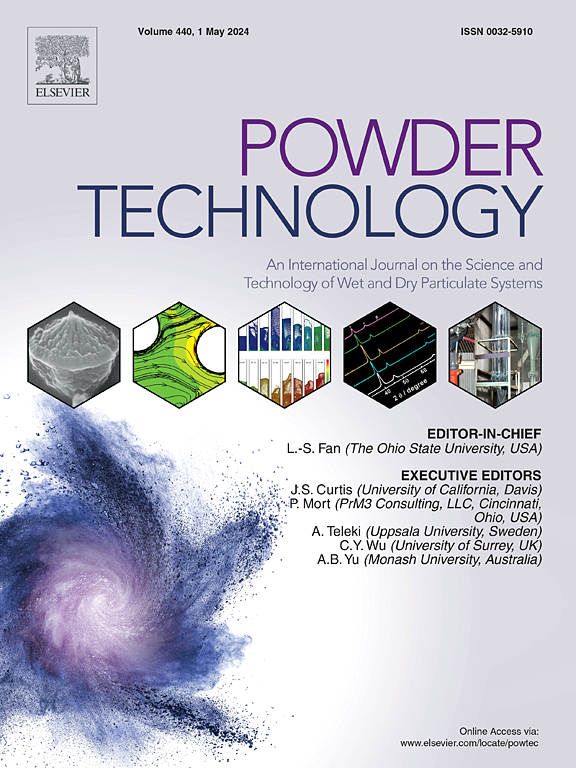Computationally efficient DEM simulation of a basket-type centrifugal filter using a novel switchable contact model
IF 4.5
2区 工程技术
Q2 ENGINEERING, CHEMICAL
引用次数: 0
Abstract
The discrete element method (DEM) offers enormous potential to gain a better understanding of cake formation in centrifugal filtration. However, the necessity to represent the highly porous filter mesh in these simulations incurs a significant computational cost. We propose replacing the porous mesh boundary that is conventionally used with a ‘switchable contact model’ (SCM) in which the contact model between a particle and a continuous cylindrical shell is selectively enabled or disabled depending on the particle's location at the periphery of the centrifuge basket. SCM is disabled whenever a particle is deemed to be in contact with a pore location, thus allowing its egress from the basket. There was a ∼ 36 % reduction in computation time compared to the conventional mesh-based representation of a bounding filter mesh, with similar particle retention and bulk cake formation behavior. This concept could in principle be applied to model any repetitive porous structure in DEM.

基于新型可切换接触模型的篮式离心过滤器的高效数值模拟
离散元法(DEM)为更好地理解离心过滤中的滤饼形成提供了巨大的潜力。然而,在这些模拟中需要表示高多孔过滤网格,这需要大量的计算成本。我们建议用“可切换接触模型”(SCM)取代传统使用的多孔网格边界,其中颗粒和连续圆柱壳之间的接触模型根据颗粒在离心机篮外围的位置选择性地启用或禁用。当颗粒被认为与孔隙位置接触时,SCM将被禁用,从而允许其从篮子中流出。与传统的基于网格的边界过滤网格表示相比,计算时间减少了约36%,具有相似的颗粒保留和大块饼形成行为。原则上,该概念可用于模拟DEM中的任何重复孔隙结构。
本文章由计算机程序翻译,如有差异,请以英文原文为准。
求助全文
约1分钟内获得全文
求助全文
来源期刊

Powder Technology
工程技术-工程:化工
CiteScore
9.90
自引率
15.40%
发文量
1047
审稿时长
46 days
期刊介绍:
Powder Technology is an International Journal on the Science and Technology of Wet and Dry Particulate Systems. Powder Technology publishes papers on all aspects of the formation of particles and their characterisation and on the study of systems containing particulate solids. No limitation is imposed on the size of the particles, which may range from nanometre scale, as in pigments or aerosols, to that of mined or quarried materials. The following list of topics is not intended to be comprehensive, but rather to indicate typical subjects which fall within the scope of the journal's interests:
Formation and synthesis of particles by precipitation and other methods.
Modification of particles by agglomeration, coating, comminution and attrition.
Characterisation of the size, shape, surface area, pore structure and strength of particles and agglomerates (including the origins and effects of inter particle forces).
Packing, failure, flow and permeability of assemblies of particles.
Particle-particle interactions and suspension rheology.
Handling and processing operations such as slurry flow, fluidization, pneumatic conveying.
Interactions between particles and their environment, including delivery of particulate products to the body.
Applications of particle technology in production of pharmaceuticals, chemicals, foods, pigments, structural, and functional materials and in environmental and energy related matters.
For materials-oriented contributions we are looking for articles revealing the effect of particle/powder characteristics (size, morphology and composition, in that order) on material performance or functionality and, ideally, comparison to any industrial standard.
 求助内容:
求助内容: 应助结果提醒方式:
应助结果提醒方式:


